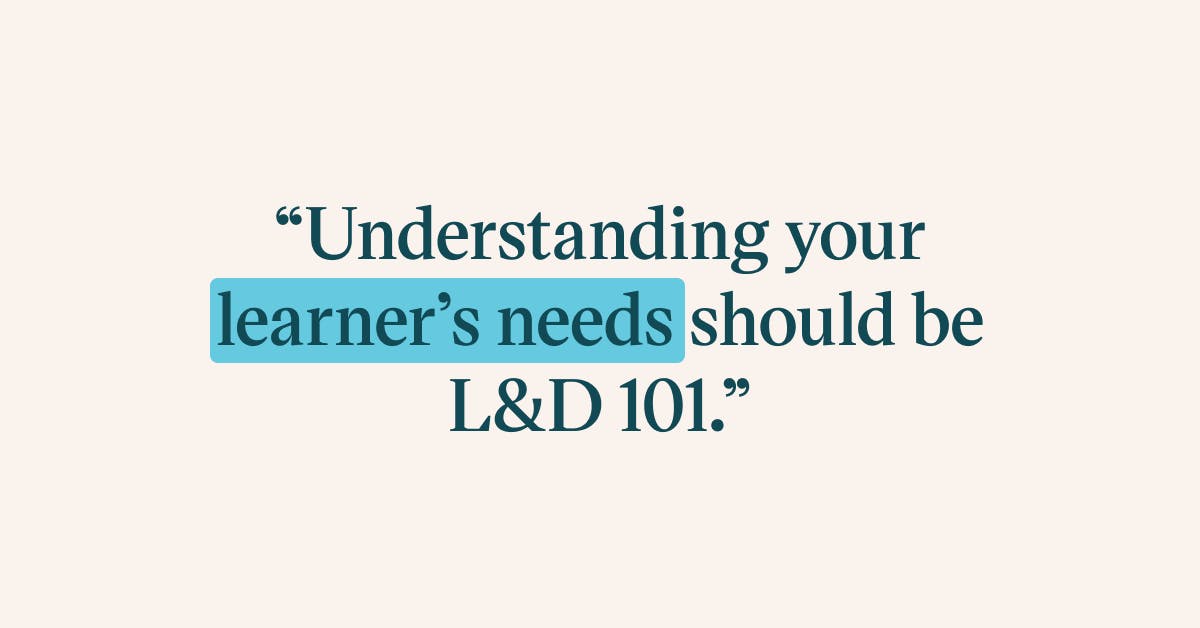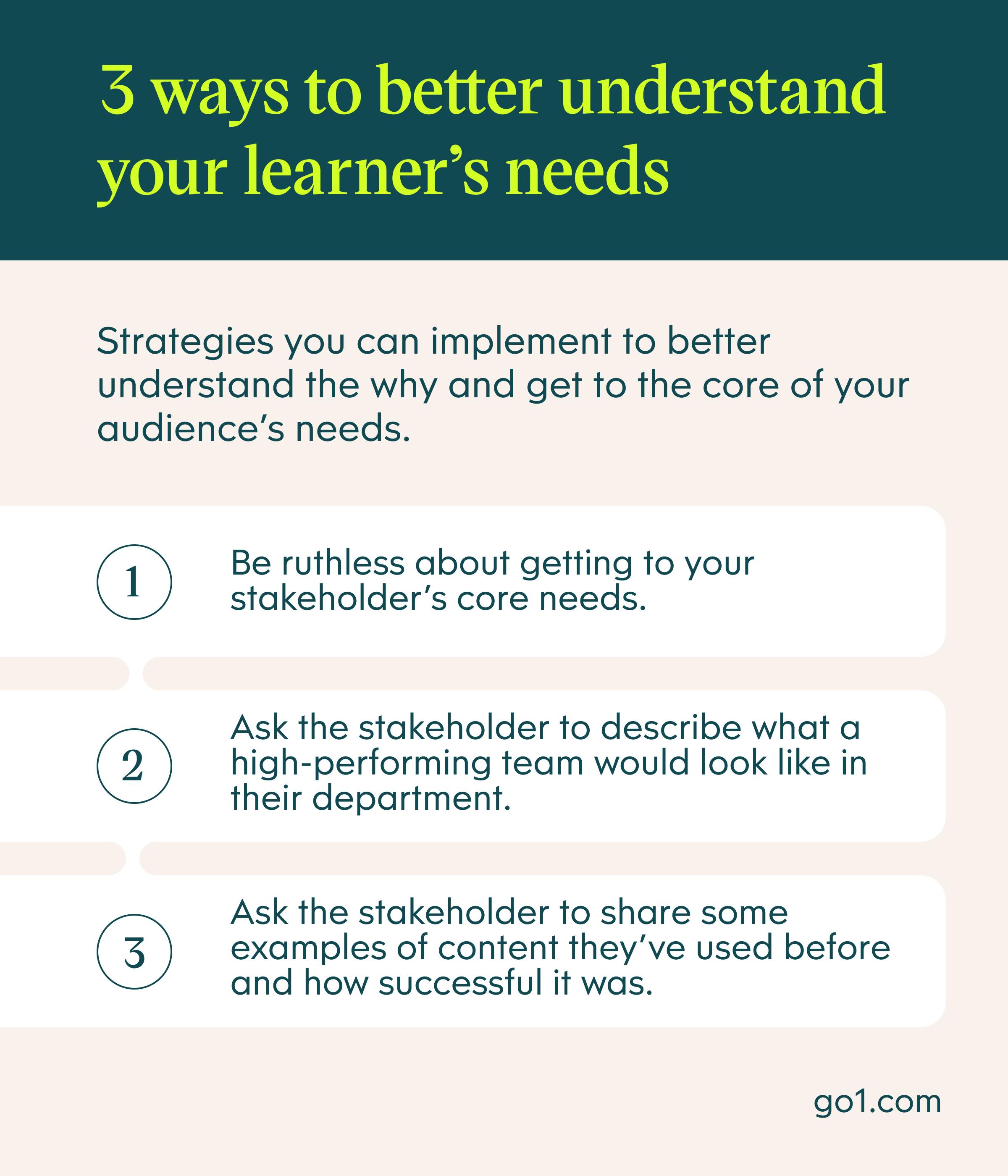
Start small and focus on priority skill gaps to better understand your learners

Understand the why.
When planning a learning project, you will probably ask the same few questions. Who needs it? When do they need it? How do they need it?
While these are all valid questions, this list is missing the most crucial question of all: why do they need it?
Failing to understand why a learning project is essential is a fundamental misstep. Too often, L&D teams anchor themselves to an assumption rather than taking the time to conduct in-depth interviews with the end-user.

Most learning projects break down at this point because L&D teams have not had enough exposure to the subject matter area that they need to help upskill. In fact, according to The Transformation Journey’s 2019 Report, only 24% of learning leaders proactively encourage learner-centric strategies.
Similarly, Emerald Works’ 2020 Back to the Future Report finds that “[learning leaders] try to understand their audience using transactional data. But they can’t use this data to measure impact, create transformational success, or change behaviour...they’re looking through the wrong lens. For example, only 16% believe their people engage in online learning without prompting. But 74% of learners say they’re happy to learn online without prompting.”
This disconnect occurs because we are failing to understand the why. Reacting based on assumptions and developing a plan without truly understanding your audience will usually backfire when it’s time to implement and execute your plan.
For further insights into understanding your learner’s needs, be sure to read our articles on aligning L&D to the organisation’s strategy and what the modern learner needs.
3 pitfalls of failing to understand your audience
Understanding your learner’s needs should be L&D 101. Here are three pitfalls that can arise when you skip this vital step.

- While there is always going to be a gap in your subject matter knowledge, ideally, you need this gap to be as small as possible. If you don’t understand your learners’ underlying needs, they won’t engage with the learning content in the way that you expected. At this point, it becomes harder to re-engage the learner as momentum in the program is lost.
- Procuring learning content without thinking of long-term engagement will mean engagement drops off later in the project. For example, just including long-form video content for upskilling a sales team over 60 days will get laborious very quickly as the learning experience becomes too predictable.
- A lot of the time, L&D priorities are tied to things that are easy but make a small impact on the business strategy, rather than things that are harder but make a big impact on the business strategy. To really make a difference, L&D must go out of its way to flip this script.

While this may sound straightforward, showing genuine curiosity about your stakeholder’s needs can be highly beneficial from an L&D perspective.
3 essential upskilling opportunities for L&D
Breaking these ingrained habits won’t happen overnight. However, to accelerate this process, L&D teams must take this opportunity to embrace upskilling to equip them with the necessary tools to understand their audience’s needs.
This process starts with three essential skills:
- Active listening
- Stakeholder interviewing
- Agile project management
In conjunction, these skills can help L&D teams break free of assumptions and hone in on the relevant facts.
LinkedIn’s 2020 Workplace Learning report highlights the importance of upskilling, finding that the top five in-demand soft skills for L&D are currently creativity, persuasion, collaboration, adaptability, and emotional intelligence. All of these skills can play a major role in understanding your audience's needs.
Ultimately, by upskilling yourself in the stakeholder interview process, you will stop anchoring to what you think is required, and start to really understand what your learners need. After all, understanding learners’ needs should be at the very heart of what L&D does.
For more insights, be sure to subscribe to the Go1 newsletter to stay on top of all the latest L&D trends. Or, you can book a demo today to find out how Go1 can help with your team’s learning needs.




